
Discomfort on the bottom of your foot can be frustrating, making every step challenging. Addressing it early is key to preventing further issues that could keep you off your feet. From simple home treatments to warning signs that require professional care, we’ve gathered all the essential information you need to manage and alleviate bottom of foot pain effectively.
Common Reasons for Pain on the Bottom of Your Foot
Plantar Fasciitis
Plantar fasciitis, a leading cause of bottom-of-foot pain, plantar fasciitis develops when the plantar fascia becomes irritated and inflamed. This thick band of tissue runs along the sole of your foot, helping to absorb impact while you walk or run. Repetitive stress, prolonged standing, or excessive strain can cause tiny tears, triggering inflammation. The resulting pain can range from sharp, stabbing sensations when you first step out of bed to a lingering ache throughout the day.
Unsupportive Footwear
Wearing shoes that don't offer proper fit or support can lead to various foot issues. Your feet may feel squeezed, experience excessive rubbing, or lack the necessary arch support, all of which can result in pain in the bottom of your foot.
Overuse Injuries
Increasing your workout intensity or duration too fast can strain your feet. One potential outcome is plantar fasciitis, which results from excessive pressure on the foot's tissue. Additionally, stress fractures can develop when the bones in your feet develop small cracks from repeated impact.
How to Alleviate Bottom-of-Foot Pain with Simple Home Remedies
Rest and Ice
Taking time to rest allows your foot to heal, and applying ice helps to reduce both swelling and discomfort. Limit your time on your feet as much as possible during recovery. Ice the affected area for 15 to 20 minutes, and allow 30 minutes of rest before reapplying.
Stretching Exercises
Specific stretches can be effective in alleviating pain on the bottom of your foot. For toe pulls, sit comfortably and gently pull your toes toward your shins. To stretch your calves, stand with one foot forward, bend your knee slightly, and press your heel firmly into the ground.
PCSsole Insoles
Insoles are an excellent solution for relieving pain on the bottom of your foot. PCSsole insoles combine cutting-edge design and comfort. Their structure supports your foot's arch, helping to evenly distribute pressure and reduce stress on the bottom of your foot. The insoles conform to the natural shape of your feet, offering the support and cushioning they need. In addition, the insole features an EVA foam base that provides constant comfort and relief from pain and discomfort throughout the day.

When to Consult a Doctor for Bottom-of-Foot Pain
Ongoing or Increasing Pain
If foot pain persists for several days or worsens despite trying at-home treatments, it’s time to consult a healthcare provider. A doctor can pinpoint the exact cause of your discomfort and recommend a personalized treatment plan to help relieve the pain and support your recovery.
Swelling or Redness
If you notice swelling or redness in your foot, it could signal more severe conditions such as fractures or infections. It's important to seek medical attention promptly to get an accurate diagnosis and proper treatment.
Incapable of Walking
If the pain in your foot becomes so intense that walking or standing is impossible, it’s crucial to seek medical help. A healthcare provider can properly assess your injury and recommend the best course of treatment.
Preventative Measures: Steering Clear of bottom-of-foot pain from the Outset
Wear Supportive Shoes
Choosing shoes that snugly fit without letting your foot slide is a smart first step to dodge foot discomfort. Still, you’ll need added support and padding to ensure your feet stay in top shape over time.
Incorporating PCSsole insoles into your footwear will provide optimal arch and heel support, ensuring your feet remain stable and comfortable, even during long periods of activity.
Avoid Overuse
Pacing your workouts is key to avoiding overuse injuries. While it’s tempting to push yourself further or harder, it’s essential to gradually increase your intensity. Follow the ten percent rule—only add 10% more distance, duration, or weight than the previous week. Don’t forget to balance your routine with stretching and rest days to allow your body to recover.
FAQs about Bottom-of-foot Pain
What Leads to the bottom of the foot?
Pain in the bottom of the foot can result from a variety of factors. Common causes include plantar fasciitis, overuse injuries, and shoes that don’t provide the right support or fit properly.
How do PCSsole insoles assist in easing foot pain?
By providing firm support, maintaining a steady foot position, and offering cushioning to soften impact, PCSsole insoles can help reduce existing discomfort on the soles of your feet.
Can PCSsole insoles help ward off foot pain?
Beyond easing current discomfort, PCSsole insoles can stave off future aches by supplying your feet with the framework and stability required for everyday tasks and workouts.
How do PCSsole insoles help with Plantar Fasciitis?
PCSsole insoles provide crucial arch support that helps prevent the plantar fascia from overstretching. The durable EVA foam base combined with multi-layer cushioning alleviates pain, while the deep heel cup stabilizes the heel, ensuring the plantar fascia stays protected and doesn't experience further strain.


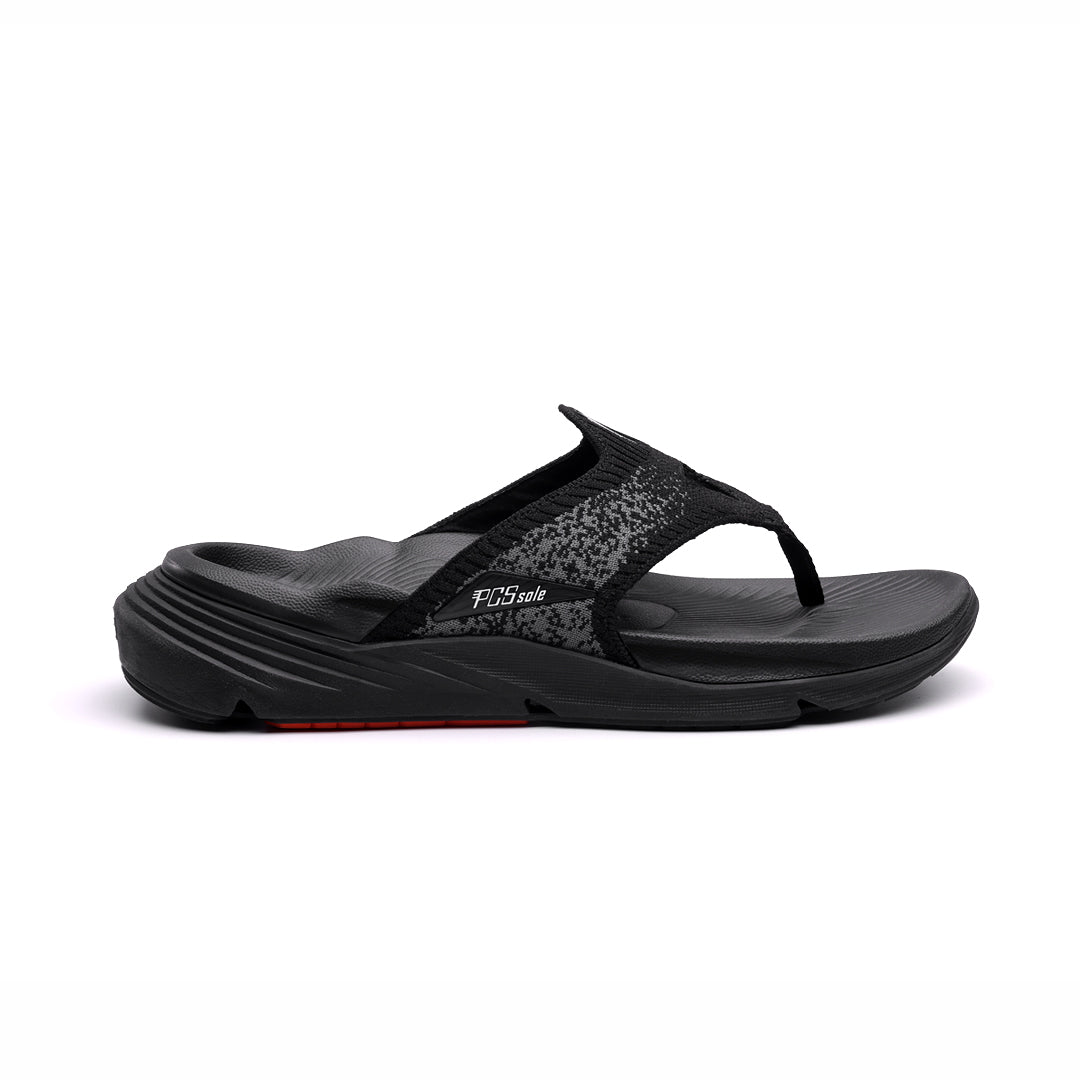

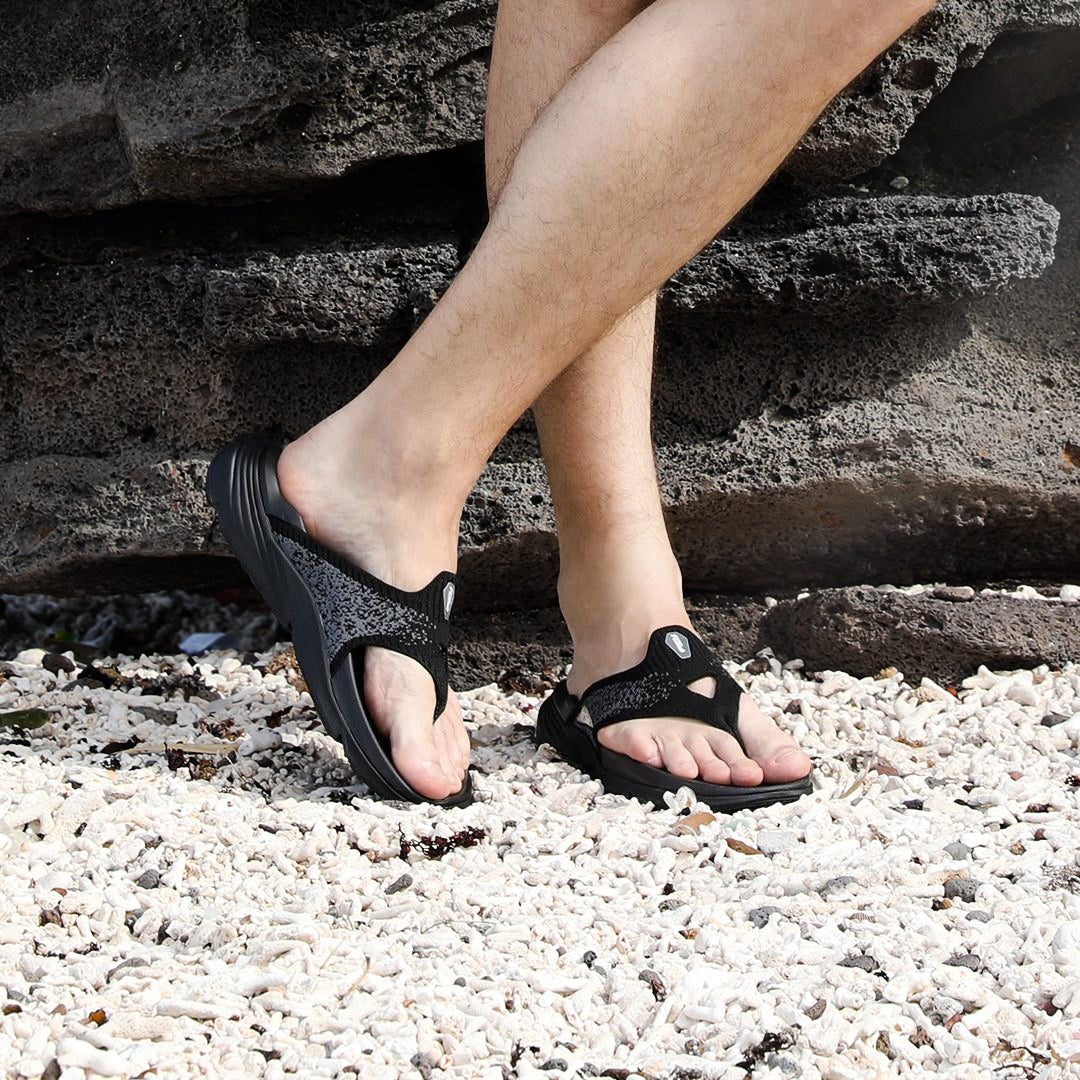
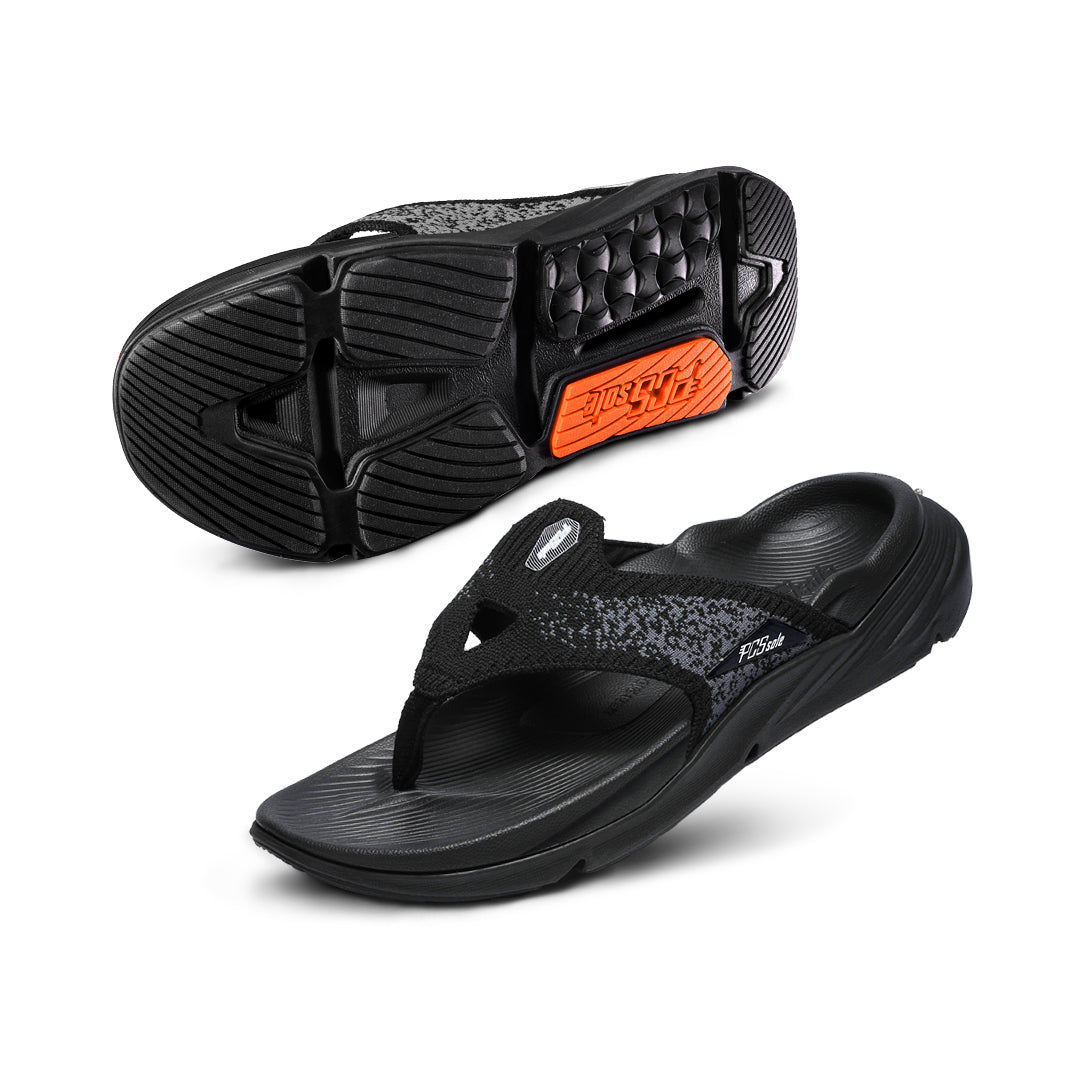
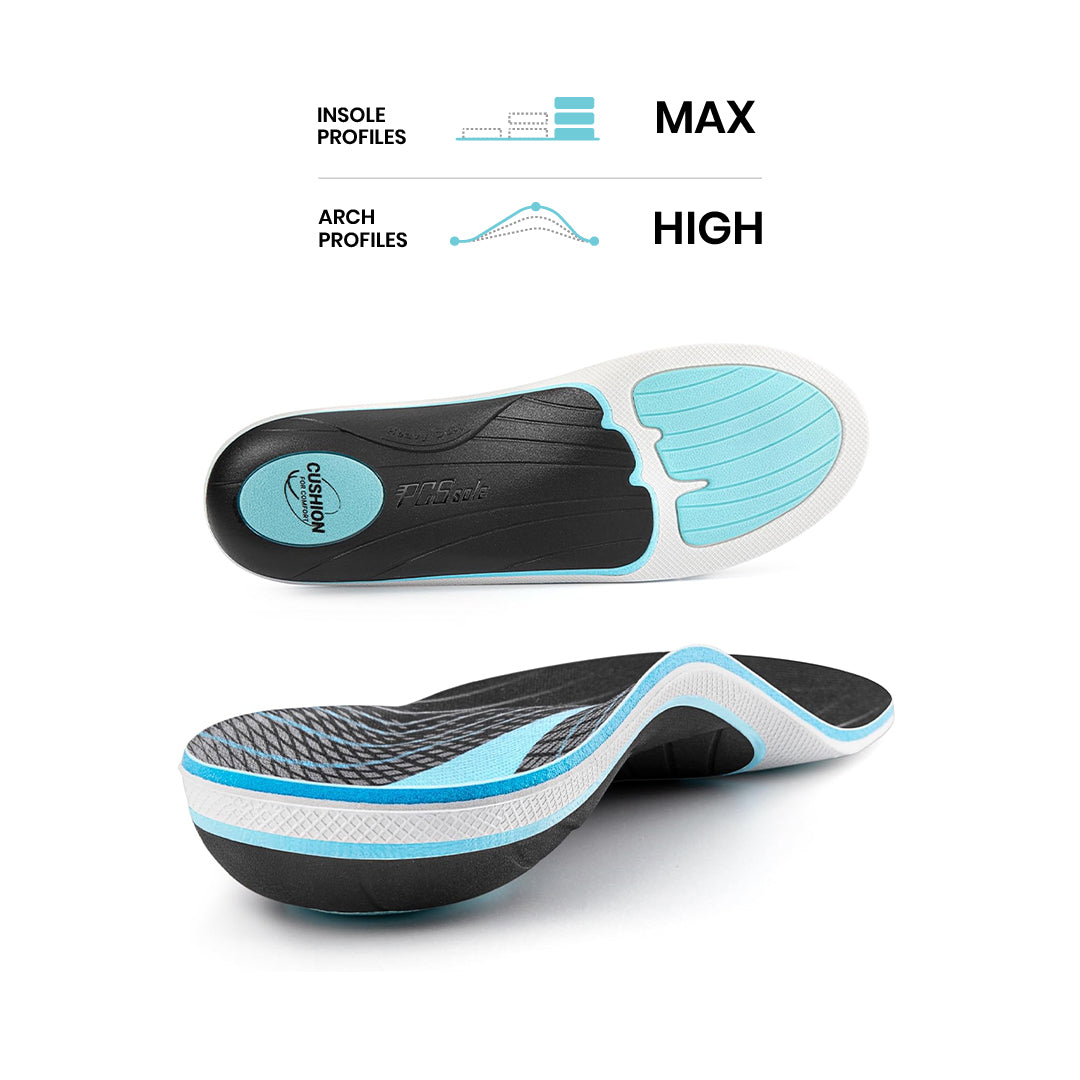
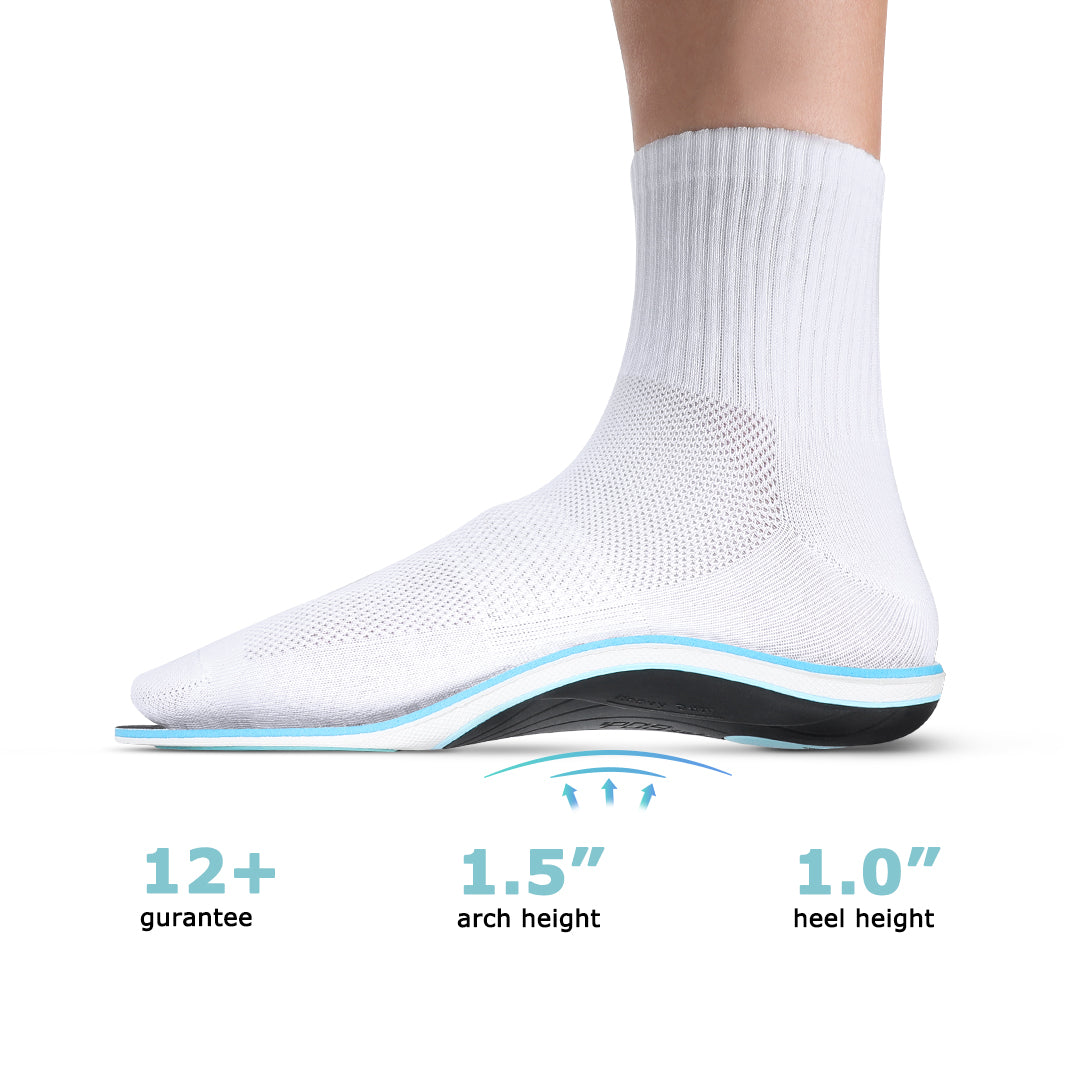
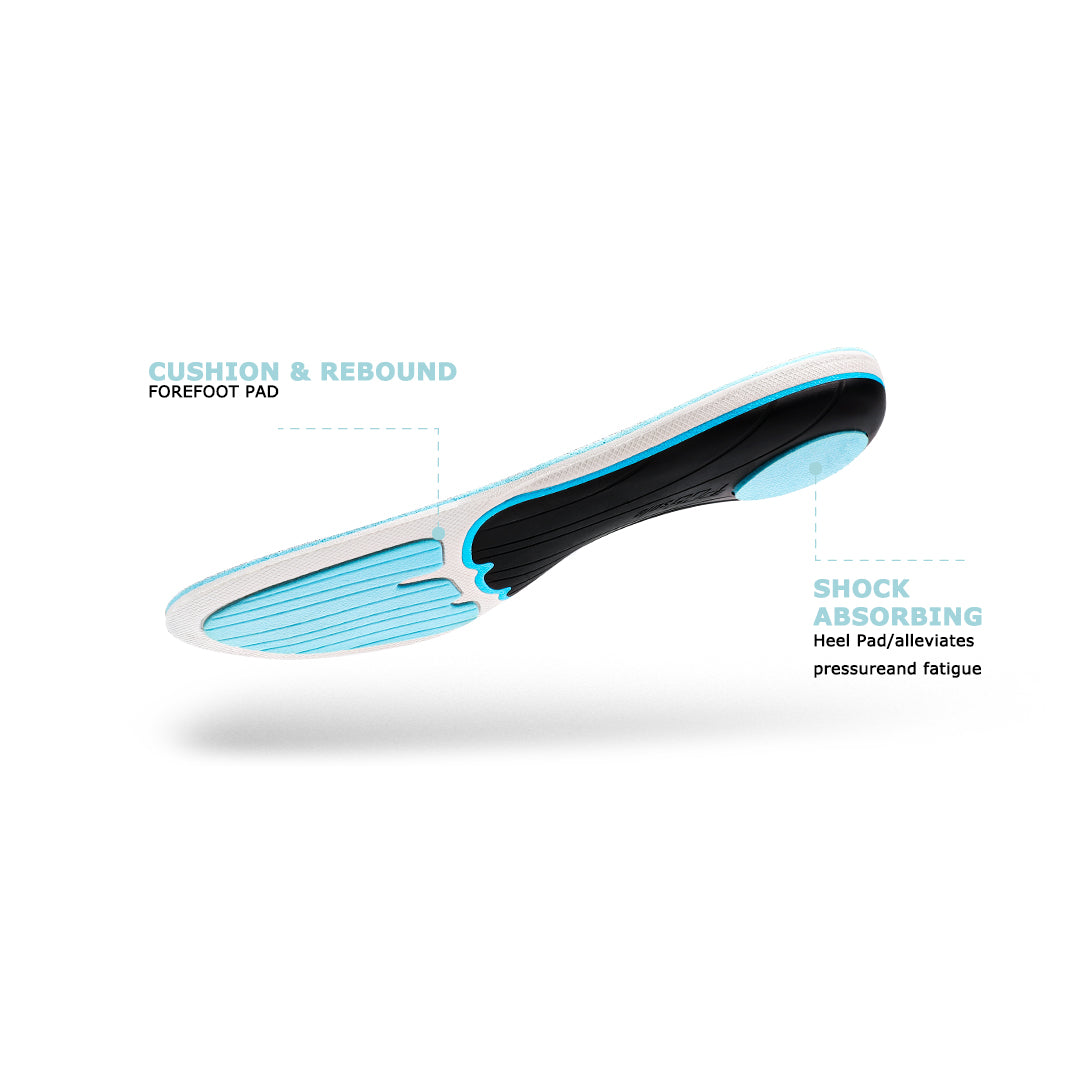
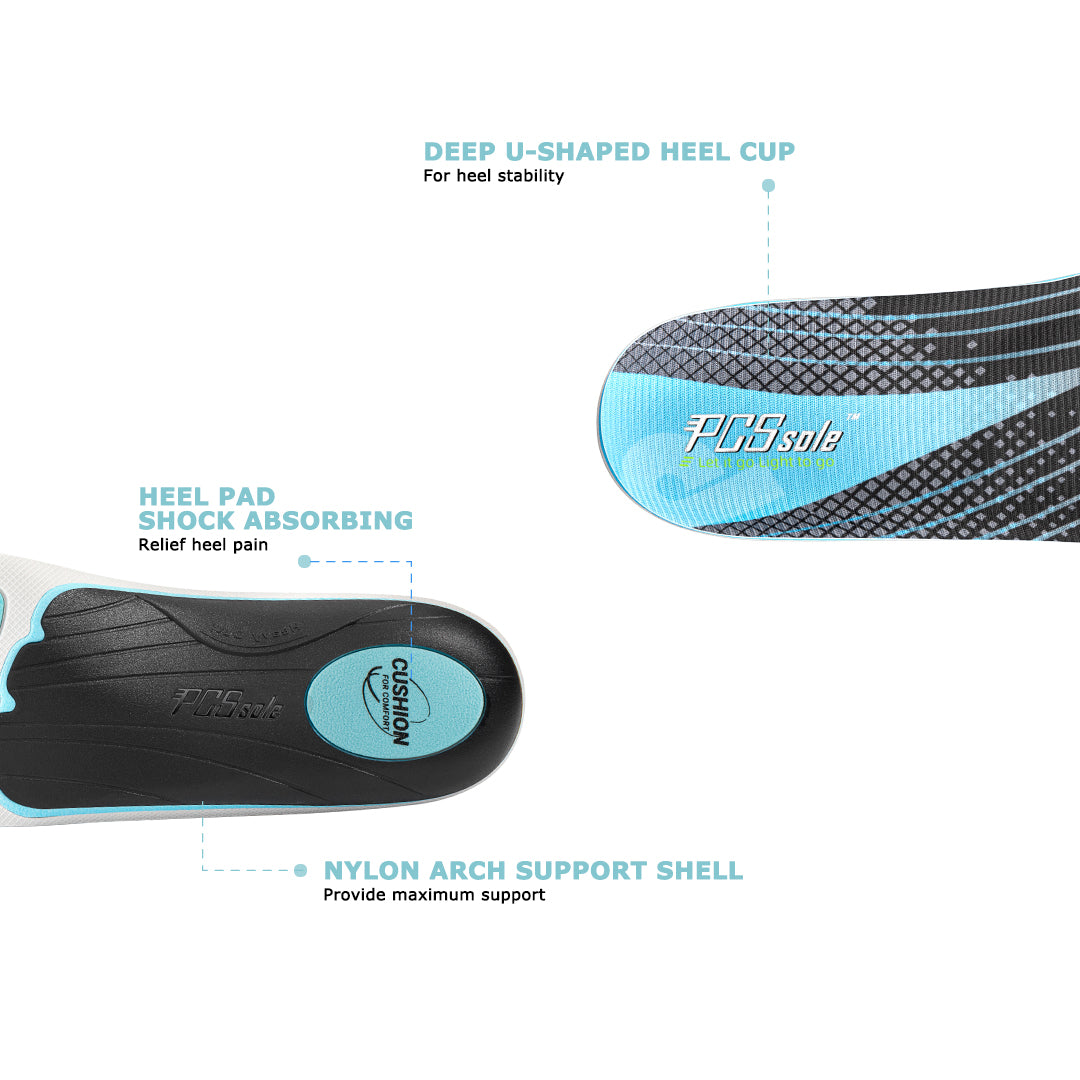
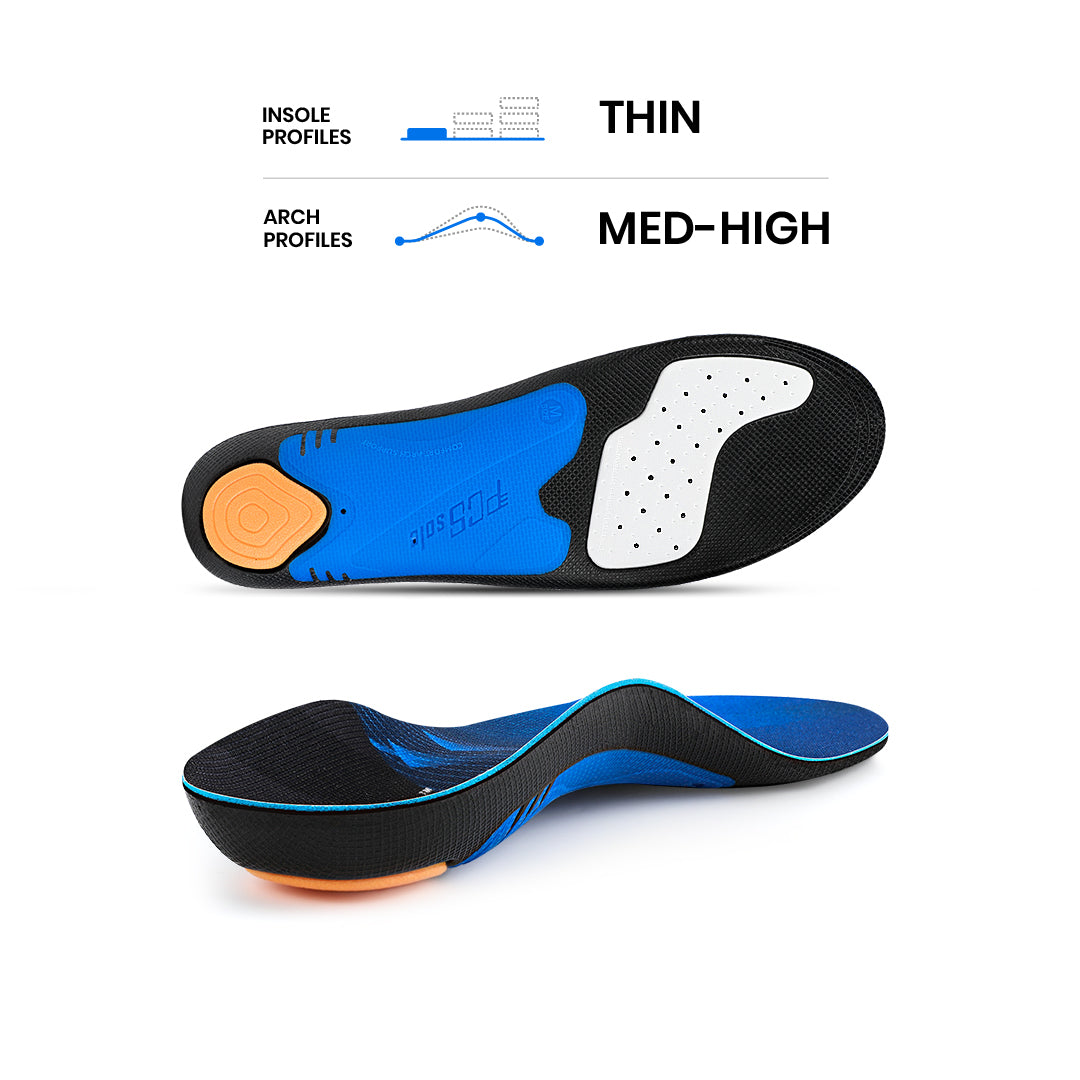
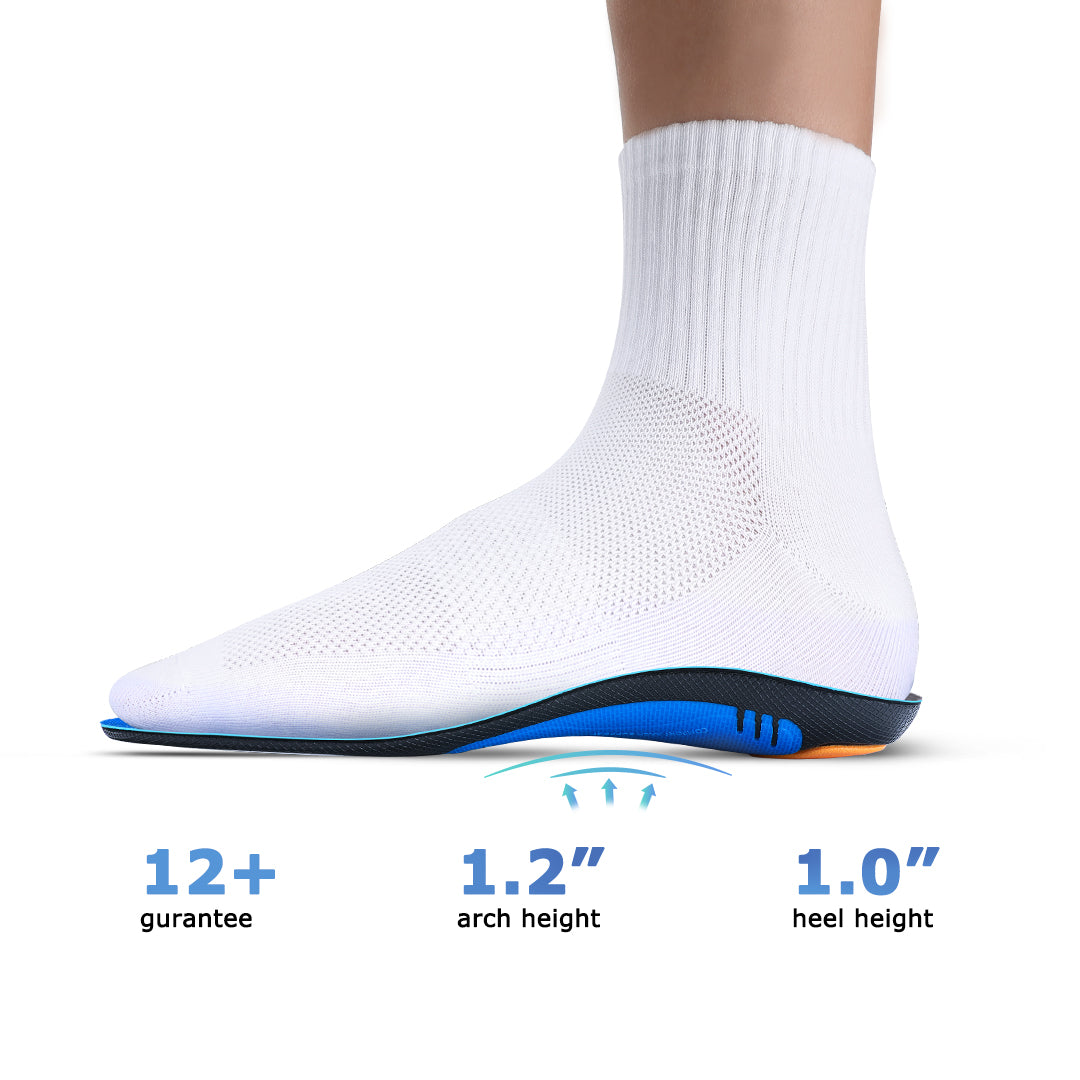


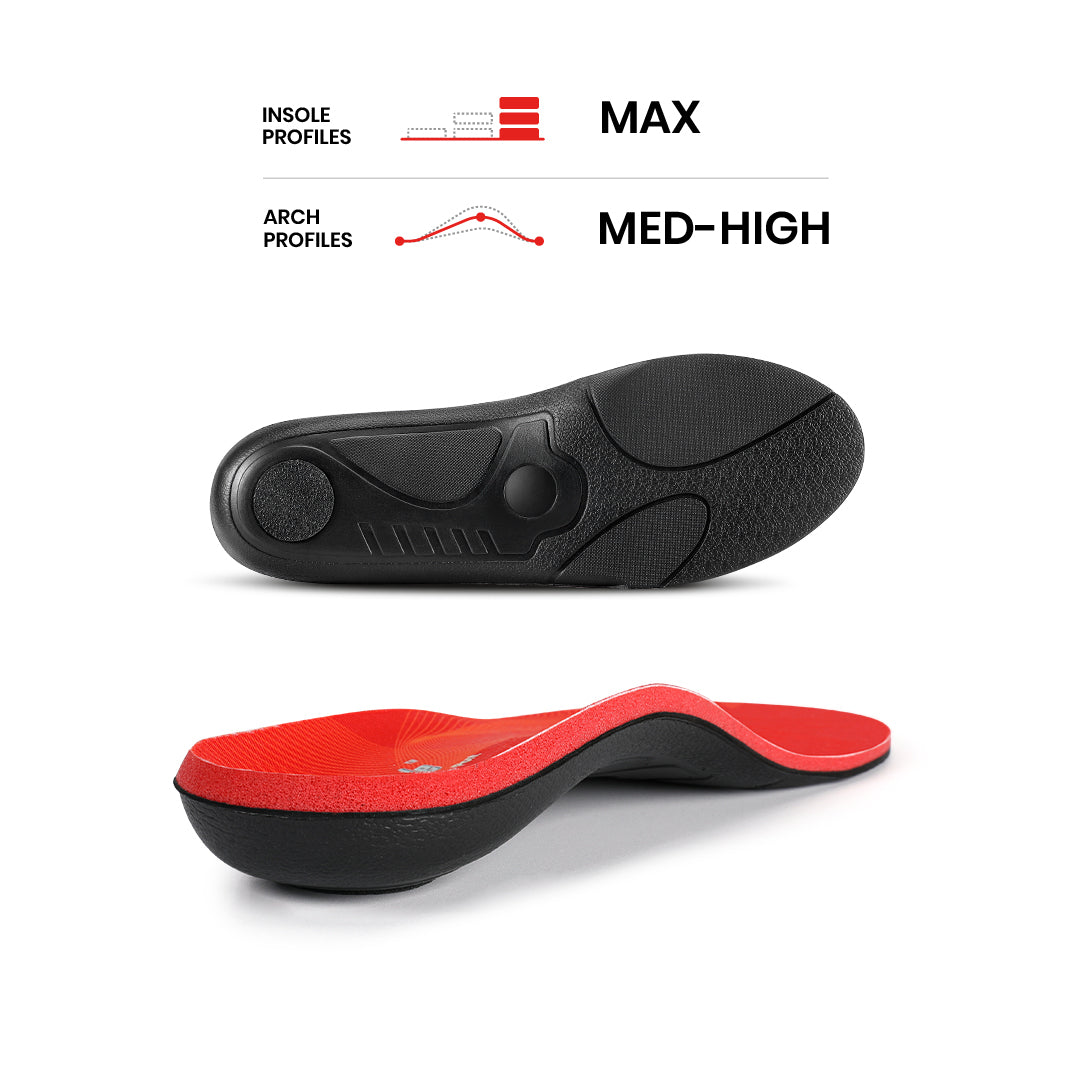
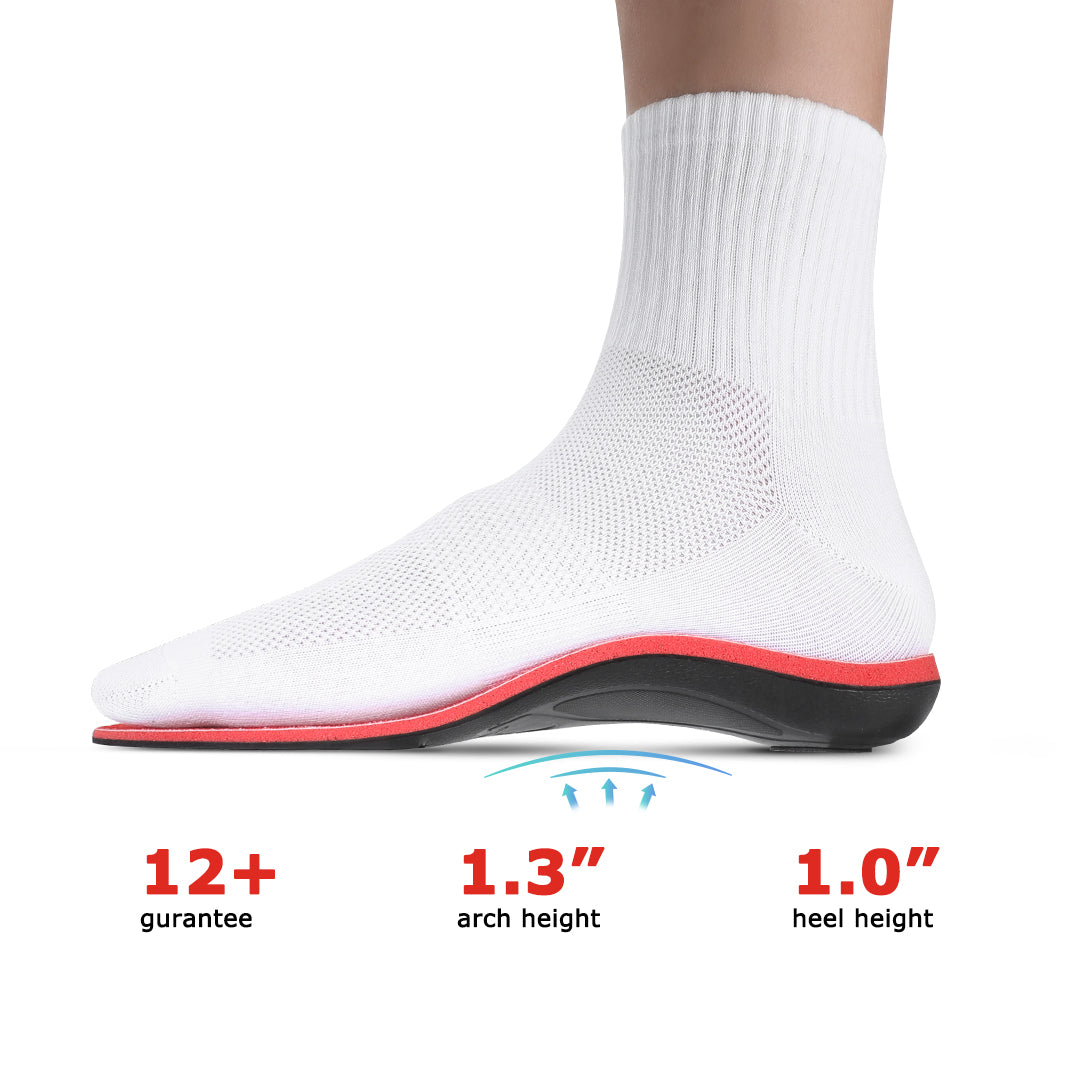

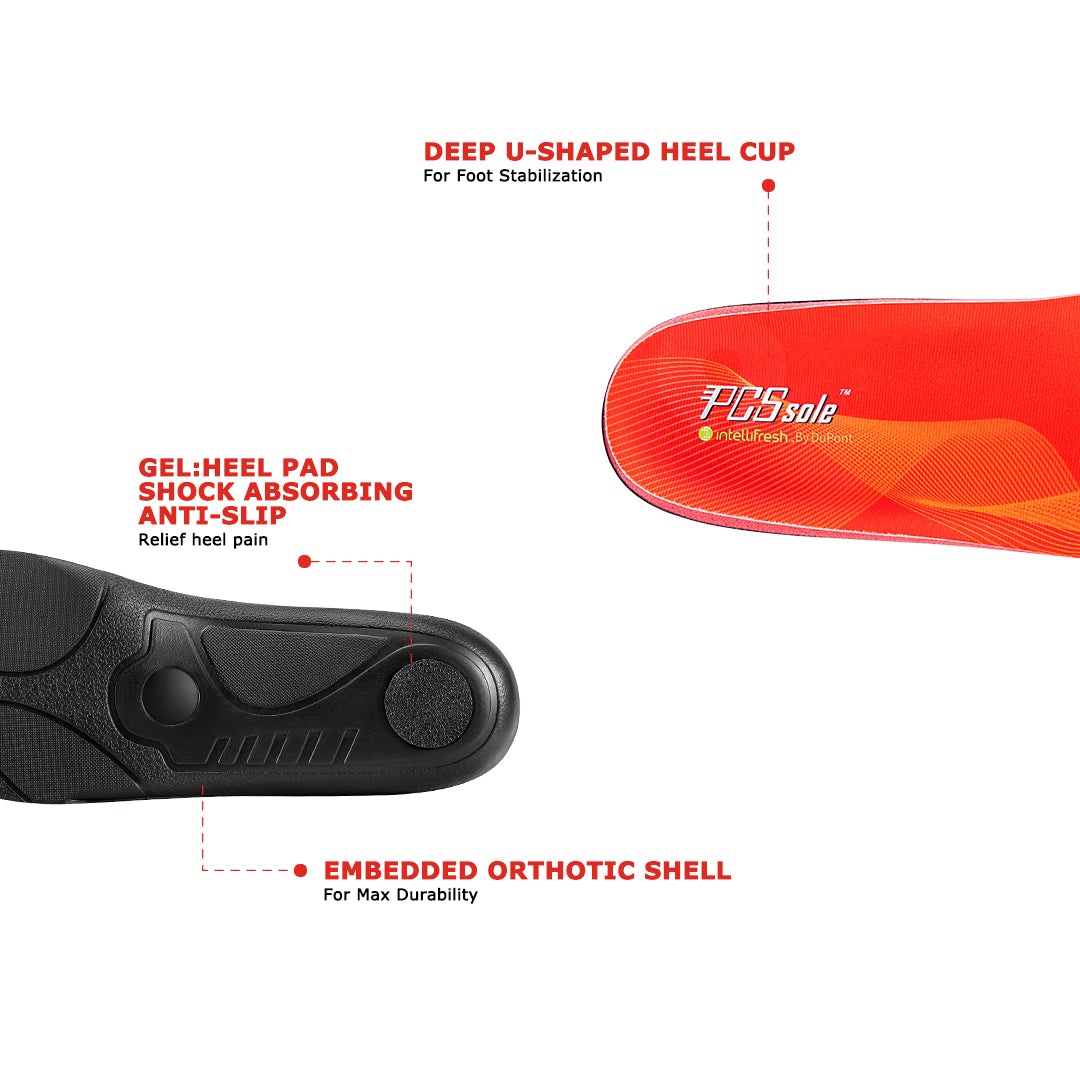
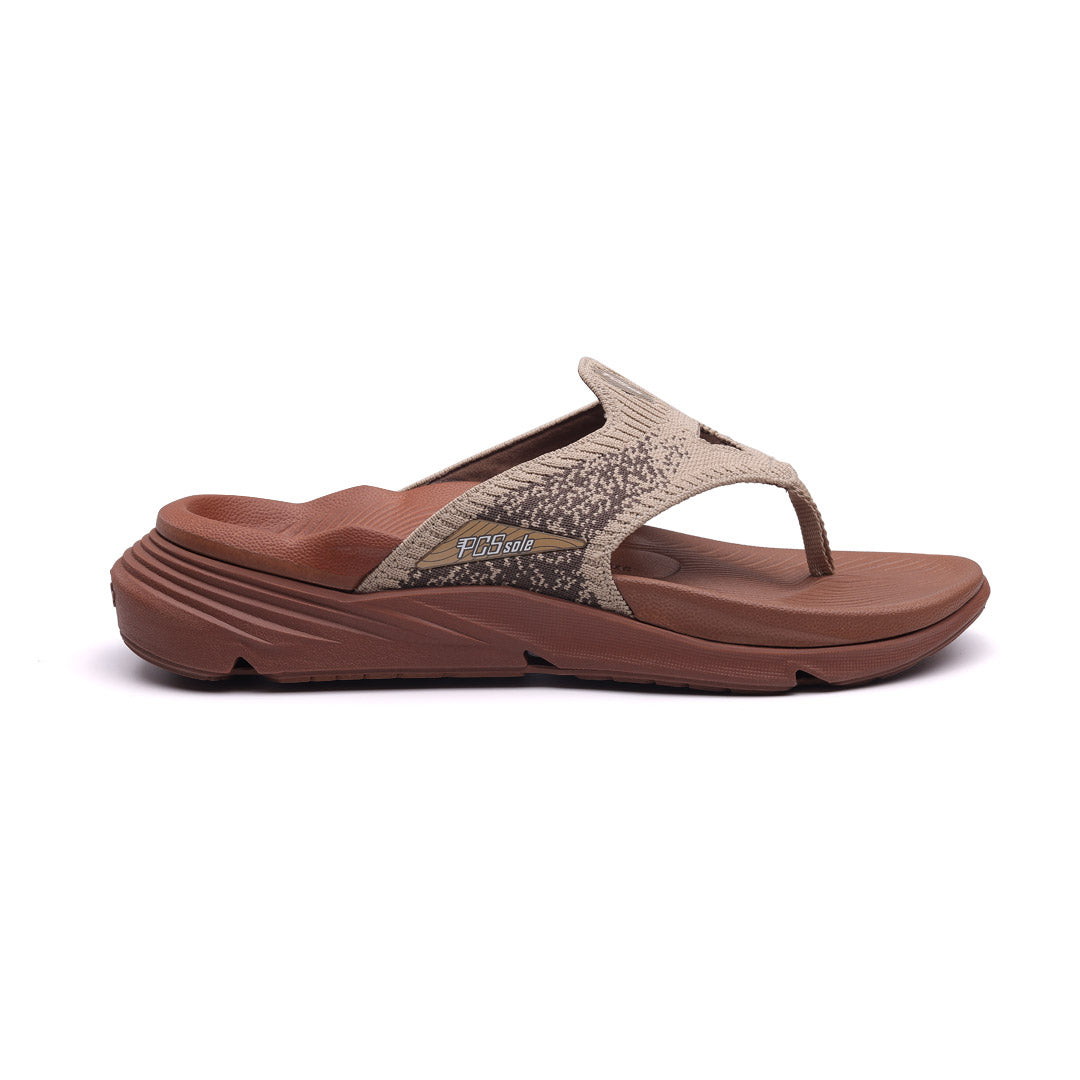


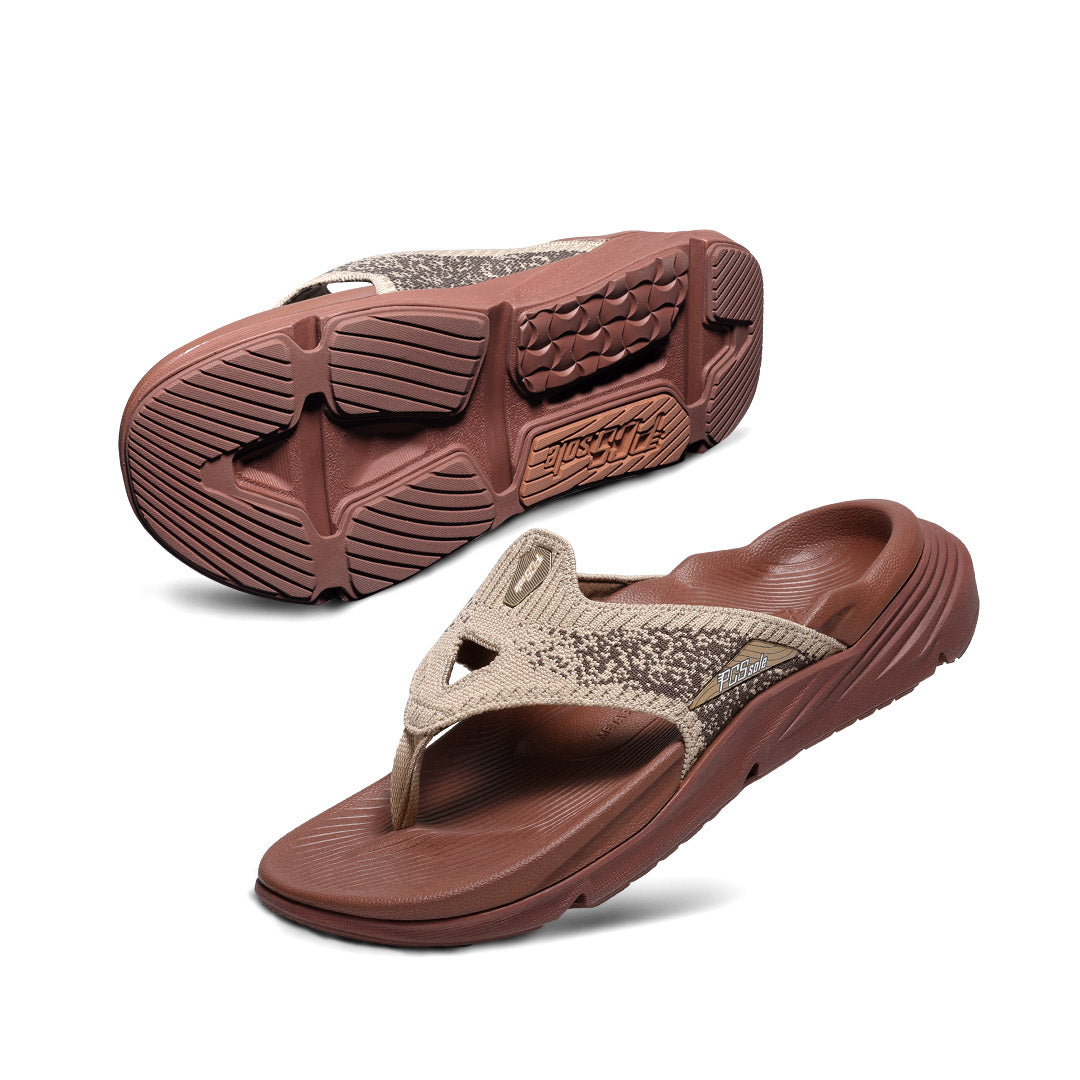
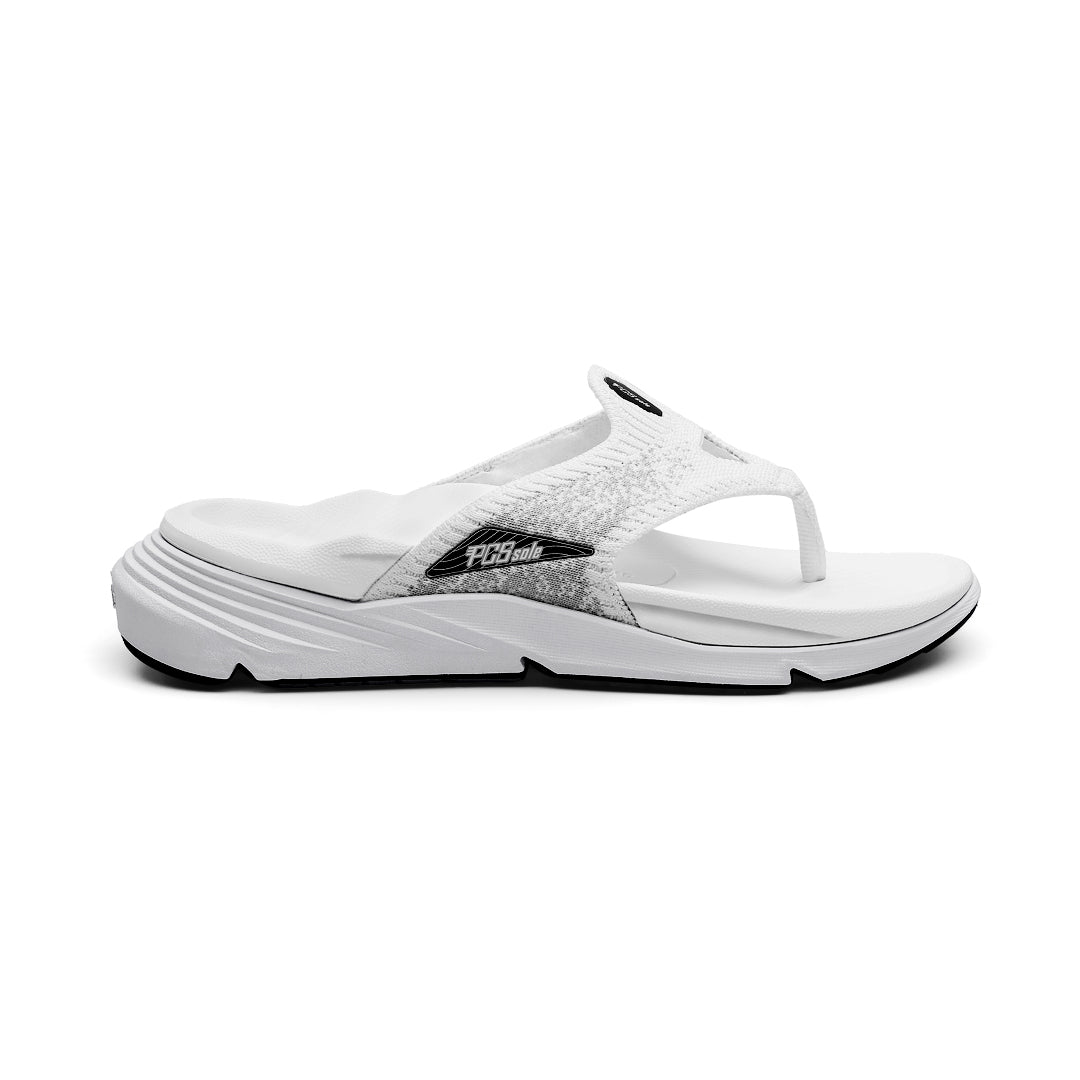

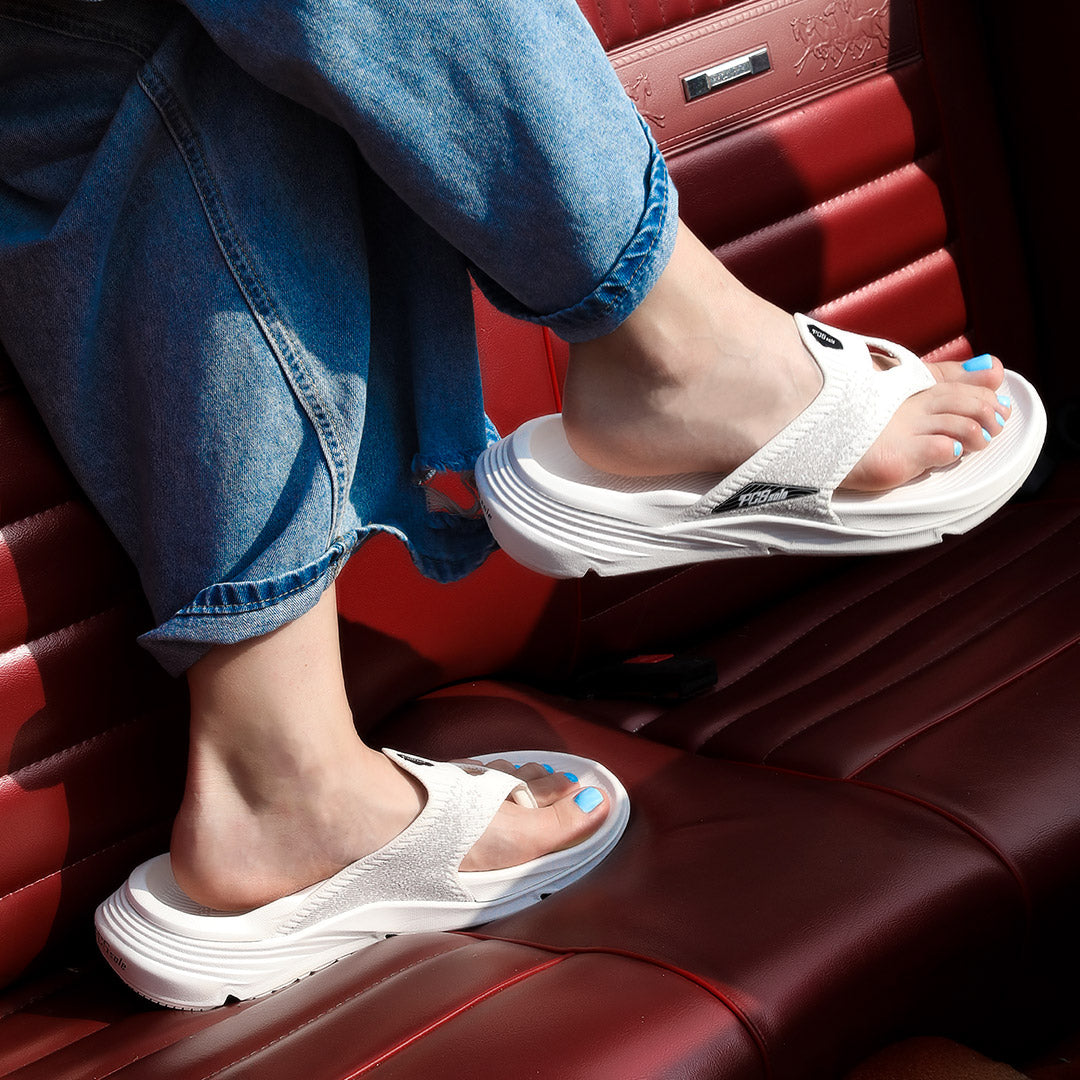
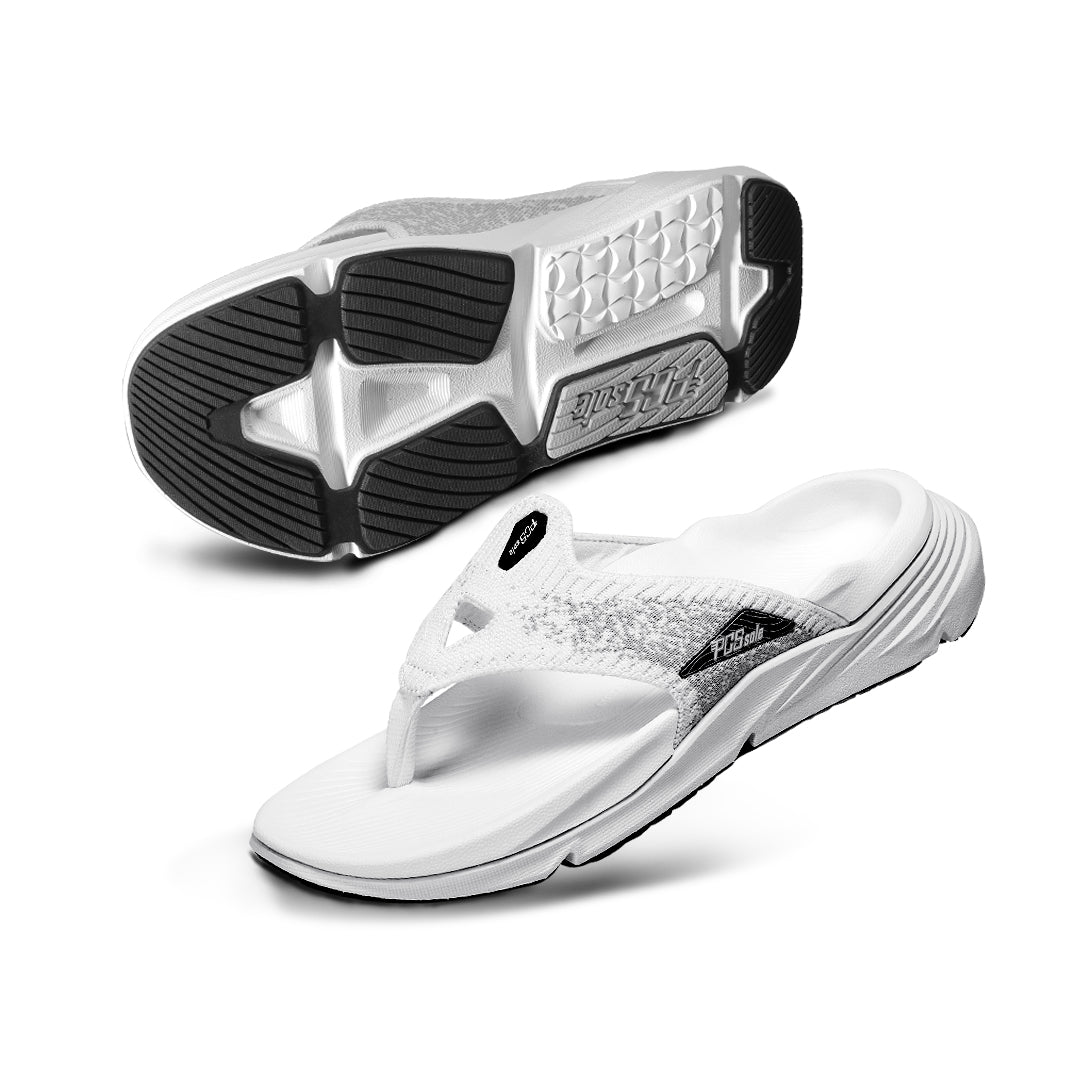
Aktie:
How To Pick The Best High Arch Support Inserts For Your Foot Type
How to Choose the Best Inserts: PCSsole Insoles Buying Guide